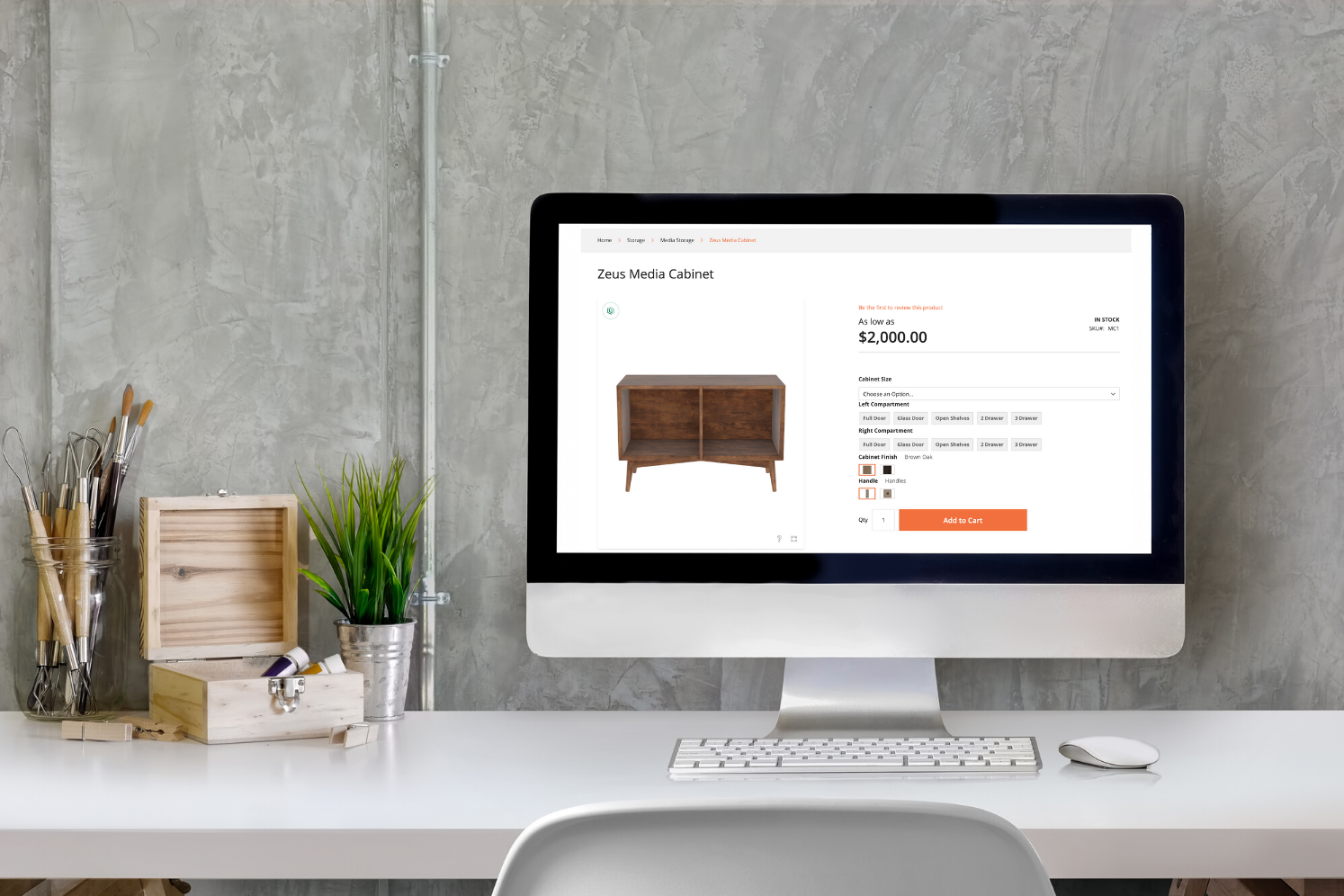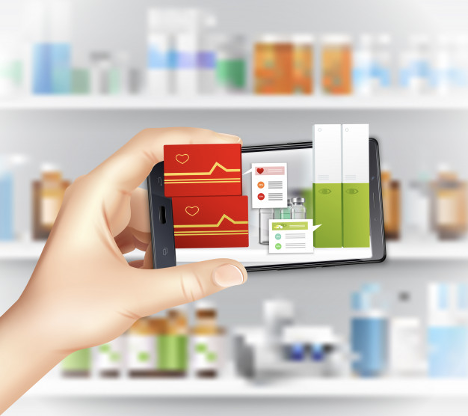How Brands Have Used 3D for eCommerce in 2024
More and more brands are taking advantage of 3D for ecommerce via virtual configurators and other technologies. With new and continuing trends in 3D technology and product configuration shaping the future of ecommerce, it's worth taking a look back to how brands leveraged these in 2024.
Key Takeaways
- Four companies leading the way with 3D ecommerce experiences are Crate & Barrel, Allen Edmonds, Ulrich, and TaylorMade.
- Using 3D images in ecommerce provides a better shopping experience, enabling consumers to visually inspect the product before buying as well as configure it to their specifications.
- 3D in ecommerce also includes augmented reality technology, which enables users to "try before they buy", aligning expectations and increasing customer satisfaction.
3D for ecommerce has made major strides, as companies seek to replicate the in-store shopping experience as much as possible. Brands of all kinds are working to offer online shoppers the ideal experience that leaves a great first impression and boosts sales.
In seeing how far we've come since the early days of 3D for ecommerce, here is a retrospective of some of the brands that have led the way in this industry.

Crate and Barrel: A Pioneer in 3D for eCommerce
Crate and Barrel has been a pioneer in the furniture industry for years, adopting a customer-centric approach to marketing.
When buying online, most consumers rely on images to make a purchasing decisions and expect about 8 images per product. For each product, Crate and Barrel provides several detailed product photographs, allowing customers to really get a feel for the products available online. Utilizing virtual photography enables them to create photorealistic 3D renders of every item in their catalog.
.gif?width=513&height=290&name=crate%20and%20barrel%20couch%20customizer%20(1).gif)
Additionally, the product images dynamically update based on the customer selections in their product configurator. Crate and Barrel wanted to create high-quality images for every possible product combination, allowing customers to more accurately visualize the items that they purchase.
In a typical shopping cart, you might see a small, stock photo of a version of the product you are purchasing. Crate and Barrel decided to add dynamic, high-quality product images to the shopping cart experience, which helps increase customers' confidence in their purchase.
"Threekit makes the impossible possible for Crate and Barrel—through image creation technology that unlocks massive scale and quality to keep our customers engaged and delighted." -Geoffrey Mark, Associate Director of CGI Strategy , Crate & Barrel
Allen Edmonds: Taking Shoes to the Next Level
Allen Edmonds, a name synonymous with quality in handcrafted footwear, has always prioritized the perfect fit. But how do they translate that promise into a modern, online shopping journey for high-end shoes? To answer that, they launched a revolutionary customization experience that sets a new standard in the industry.

First, they created stunning 3D ecommerce images for each of their shoes and customization options for them, including the ability to zoom into detail like stitching and 360° rotation to show every aspect of each shoe. With virtual photography ensuring the light hits each type of material correctly, the result is a stunning showcase of their designs.
Then, they implemented a product configurator that allows consumers to change material, color, sole, and more. Not everyone's a shoemaking expert—Allen Edmonds ingeniously removes the confusion by highlighting the specific element you're customizing with each click. No more wondering what a "welt" is; the interface guides you intuitively, ensuring each personalization reflects your vision.
This empowers shoppers to create a unique, well-fit shoe that reflects their personal style and comfort needs.
Ulrich: Offering the Ability to Try Out Designs
Ulrich Lifestyle Structures sells modular buildings like sheds, garages, and cabins. An industry leader, they partnered with Threekit to modernize and streamline their buying experience.
Modular buildings are in an industry boom with more people wanting to customize their own shed, playhouse, or free-standing office. But taking advantage of this increased demand proved challenging for Ulrich, as they relied on direct contact with a salesperson to complete transaction. They needed a solution to streamline and empower buyers to build and buy their own custom structures online.
 That's where their 3D product configurator came in. With virtual photography creating lifestyle images to inspire, their 3D images enabled consumers to fully inspect their modular buildings from all angles. With the product configurator, building material, color, and various add-ons could be played with, enhancing the shopping experience and enabling a sense of empowerment for consumers.
That's where their 3D product configurator came in. With virtual photography creating lifestyle images to inspire, their 3D images enabled consumers to fully inspect their modular buildings from all angles. With the product configurator, building material, color, and various add-ons could be played with, enhancing the shopping experience and enabling a sense of empowerment for consumers.
After the final floor plan is approved and the customer clicks "buy", configuration specs are automatically sent to the dealer to create a qualified lead. By plugging the configurator directly into their manufacturing process, they saved time and ensured greater accuracy in the sales BOM, cut sheets, and assembly instructions.
The result? Within a month, Ulrich saw a 290% increase in sales amount and a 400% increase in units sold.
TaylorMade: A Customization Like No Other
As one of the world’s leading golf club providers, TaylorMade has always led with innovation. Founder Gary Adams developed the industry’s first metalwood design, which didn’t just look and sound different from every other club—it performed better too.
TaylorMade recognized an opportunity to apply the same innovative attention to detail in their direct-to-consumer ecommerce experience. They wanted to give their online customers the exclusive ability to configure their own personalized golf clubs.
 As an expert in both the Salesforce platform and the 3D ecommerce market, Threekit quickly got to work to create and implement a smooth, beautiful, smart, and functional personalization journey for TaylorMade’s SIM2 driver.
As an expert in both the Salesforce platform and the 3D ecommerce market, Threekit quickly got to work to create and implement a smooth, beautiful, smart, and functional personalization journey for TaylorMade’s SIM2 driver.
The new interface provides a high-resolution, 3D rendering of a customer’s unique club. The user can grab and swivel the image with smooth, intuitive mouse movements, or select pre- programmed club views to see the product from every angle. The 3D rendering changes in real-time with each customization. Customers can quickly and easily configure and personalize their club’s head, shaft, grip, color and other features.
This resulted in TaylorMade reaching their three-month sales target within just 30 days, and experiencing twice as many website visits as forecasted.
Use 3D for eCommerce to Get the Results You Want
Consumers want a better-than-in-store shopping experience, and 3D for ecommerce gives it to them.
 With the help of 3D—along with augmented reality (AR), virtual photography, and AI Visual Discovery—you can experience the success that these and other brands have enjoyed from of this technology.
With the help of 3D—along with augmented reality (AR), virtual photography, and AI Visual Discovery—you can experience the success that these and other brands have enjoyed from of this technology.
Threekit offers a complete product configuration platform that will equip your brand with the tools you need for 3D ecommerce.
- We offer a product configurator that leverages virtual photography to capture every detail of your items.
- We also offer an AR solution—you can connect 3D models in your configurator to real-world environments through shoppers' mobile devices.
- Our latest technology, AI Visual Discovery, surfaces the products customers are looking for in a seamless and intuitive way, making guided selling a breeze.
To find out more about how Threekit can bring your business into the future, contact us today.


